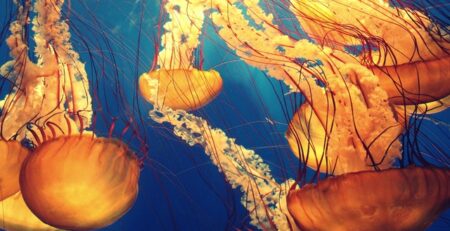Around 70 percent of the world is covered in water — which gives seascape photographer Rachael Talibart endless creative opportunities. Talibart, a former lawyer and now a respected professional photographer, recently shared tips and insight into her work with Fotospeed. Here are five seascape photography tips photographers can pick up from the interview.
Understand the ocean first.
The ability to predict where and when the best waves will hit is a big part of Rachael’s work. She says winds, tides and structures in the water like cliffs can all impact the look of the waves. While the unpredictability of the sea is one of the UK-based photographer’s favourite parts of her work, planning based on the tide, weather, and location is essential, she says.
Prep your gear.
The unpredictable nature of the ocean means that photographers planning to capture it should always make sure their gear is protected from its salty spray. Even with weather-sealed camera bodies and lenses, a rain cover is a good idea for the more intense storms, Talibart suggests. When working with the ocean, safety should also be the biggest priority, she added.
Look for details.
Many photographers are immediately drawn to that giant coastline and those big waves, but smaller subjects on the seaside can also make excellent subjects. Talibart encourages photographers to look for the smaller details like seashells and rocks. Once you spot the details, she suggests working to get great light or capturing both the movement of the sea and those smaller details.
Create texture with shutter speed.
Talibart’s work is often noted for her textures, from wispy smooth ethereal seascapes to the texture of a sharp sea spray. The key to this, she says, is shutter speed. “The sea is in constant motion and this means your choice of shutter speed may have a profound effect on your photograph,” she wrote. “Very fast speeds will allow you to freeze every droplet, creating a sculptural effect where the water starts to seem more like a solid. Alternatively, long exposures, often requiring filters, will smooth out texture to create a more ethereal mood.”
Never stop trying something new.
With so much time spent at sea, it’s common for strangers to assume Talibart has shot every kind of seascape. But constantly experimenting and looking for something new is essential, Talibart says. Try new techniques to avoid getting stuck in a creative rut, she suggests.
The sea makes an incredible subject for photography — but the vast size and constant changes on seascapes means taming the ocean in a photograph a challenging task. Learning from experts like Talibart gives photographers ready to try out escapes a jump start.
Learn more at the full post from Fotospeed, or learn about our wide selection of Fotospeed papers here.






